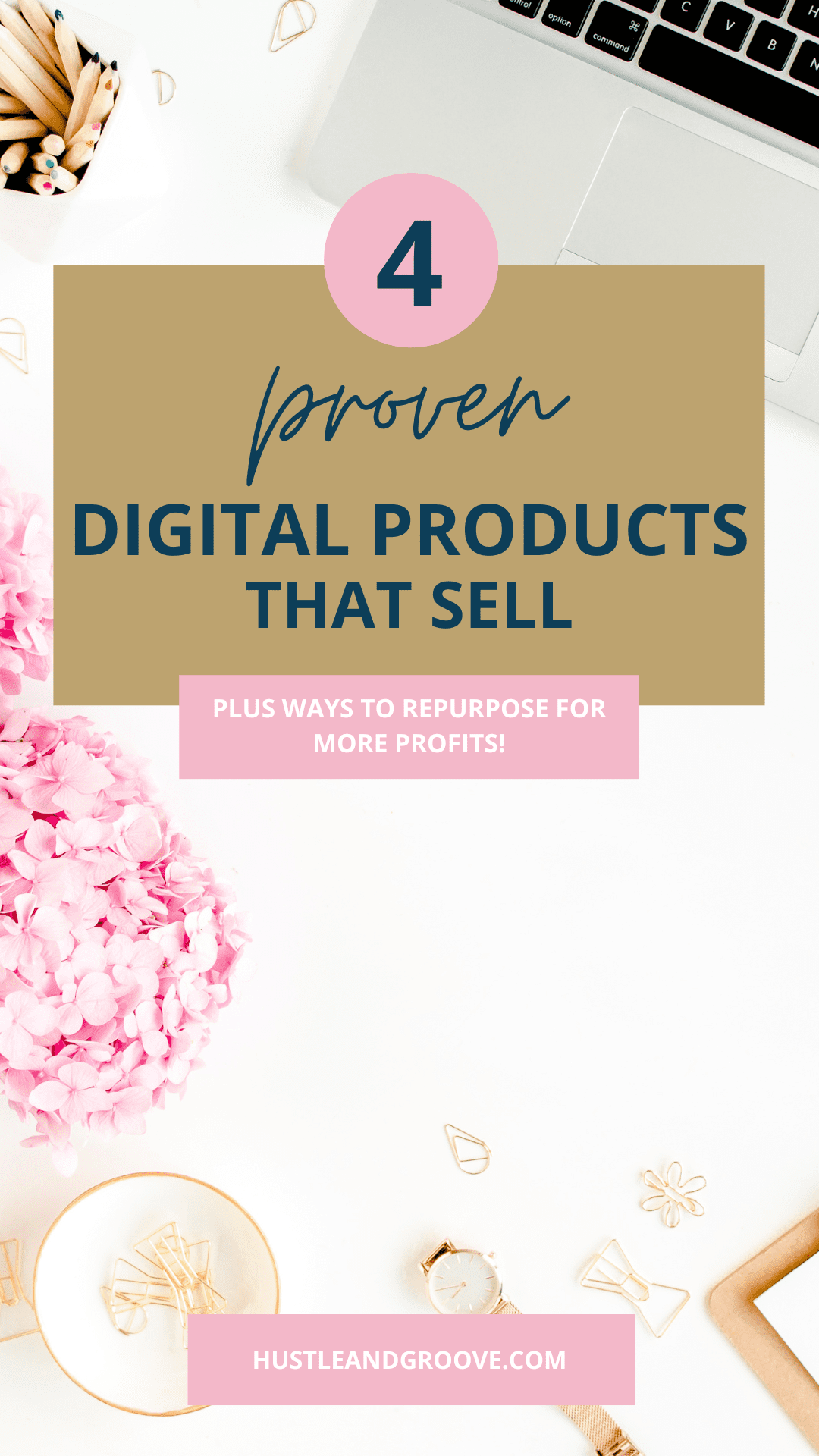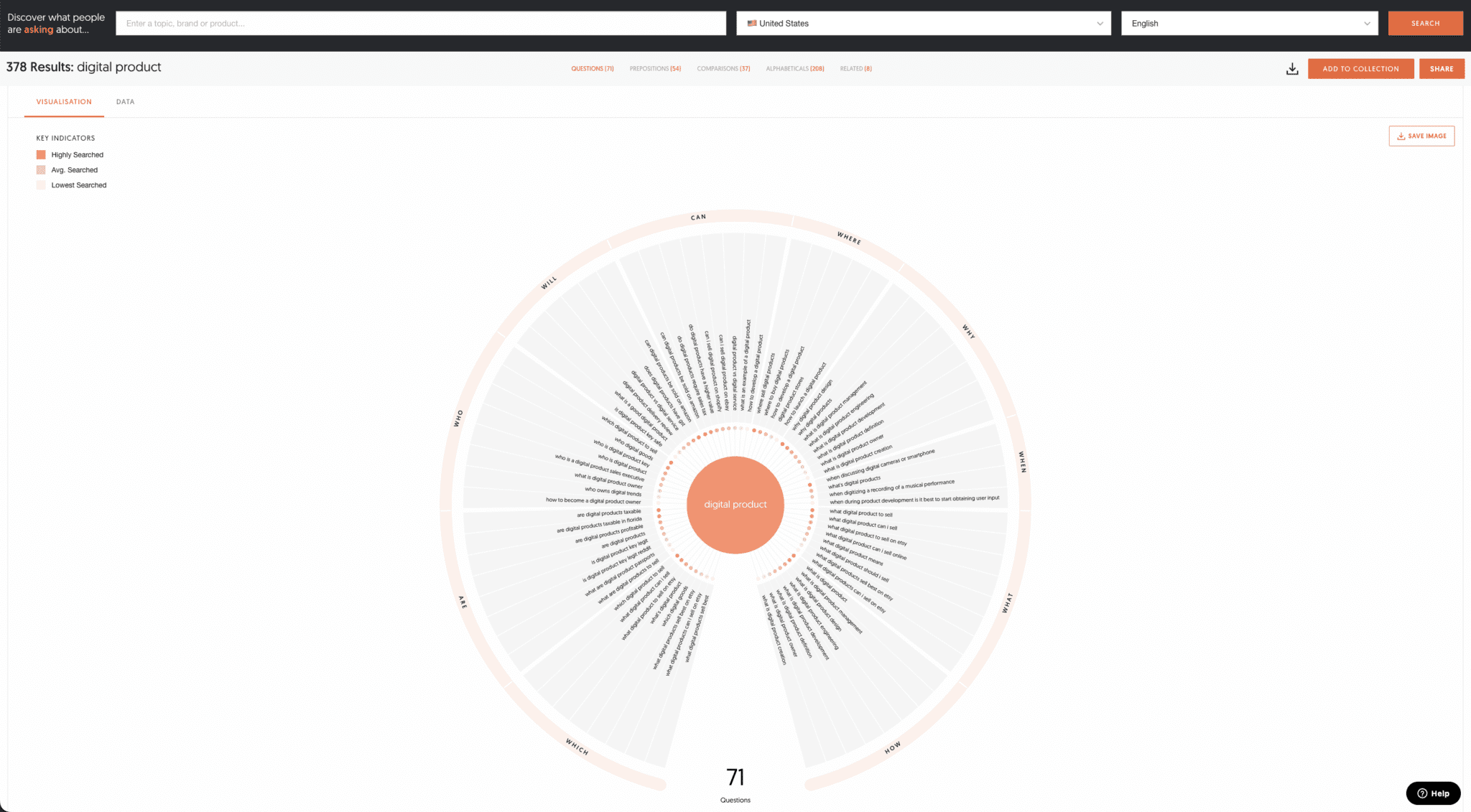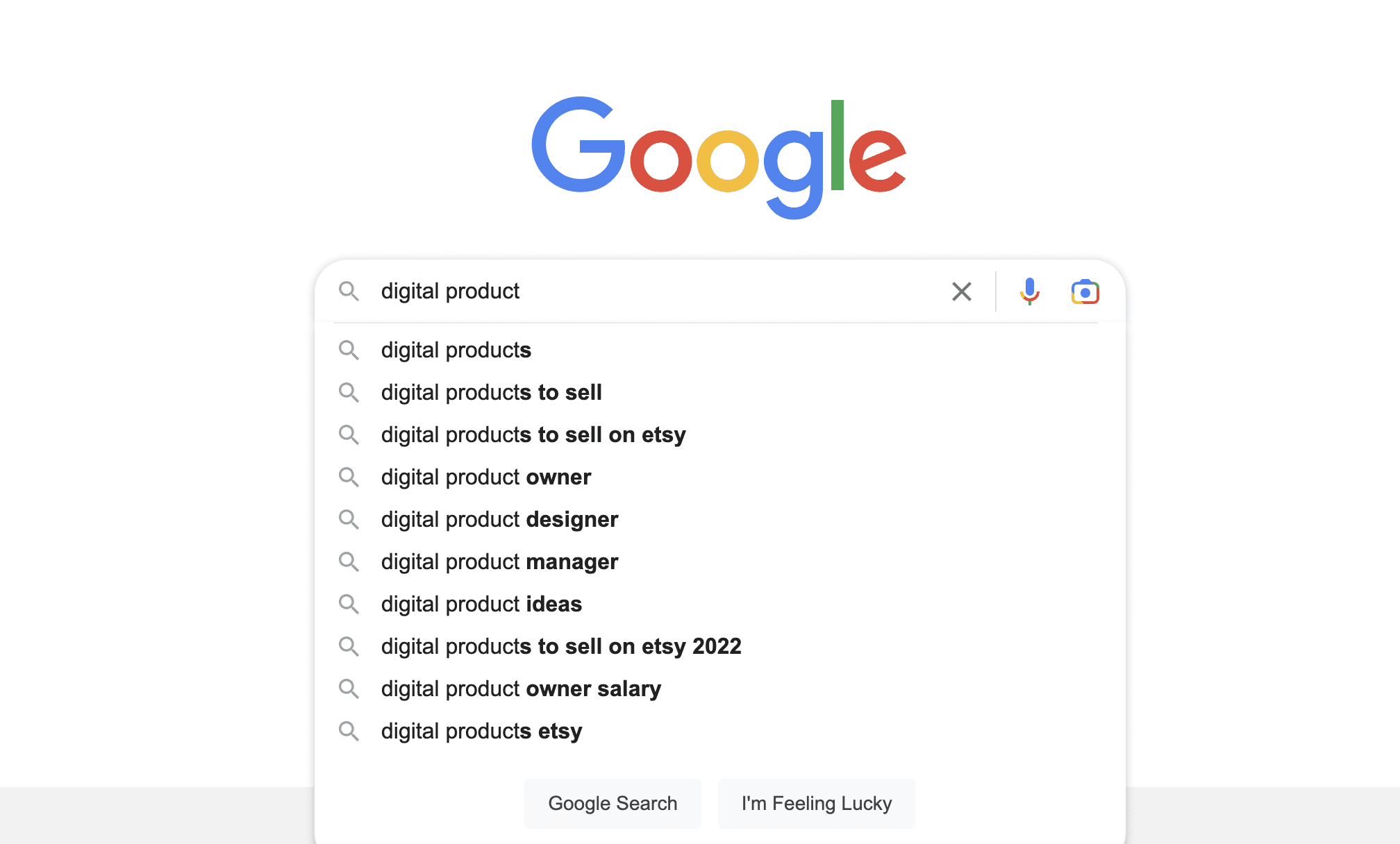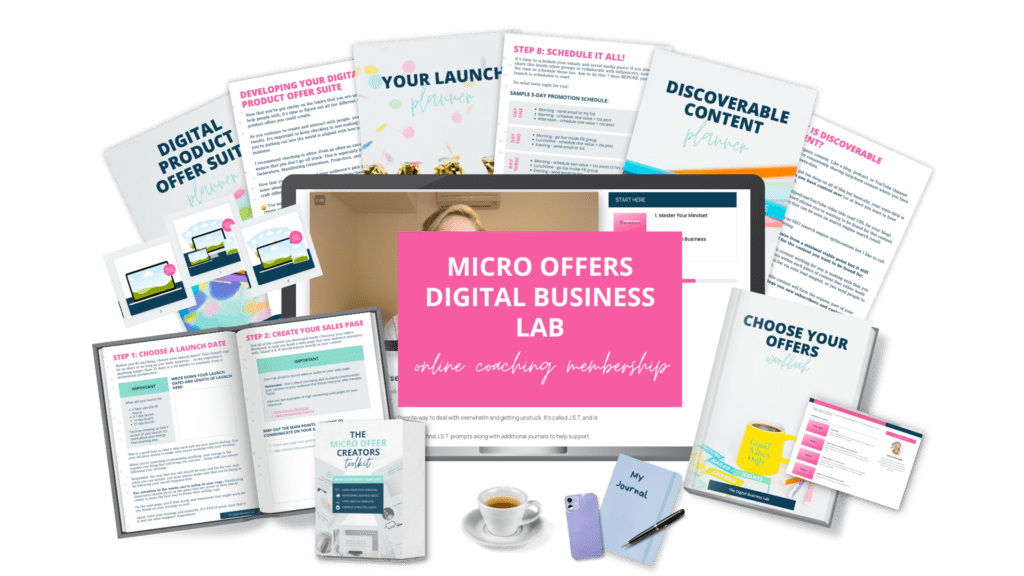I’m really excited to talk to you today because we are going to talk about what digital product to sell to grow your online business fast but perhaps more importantly, how to ensure that the products that you creating are going to be profitable.
So let’s just dive straight in. (This blog post is part of a 2-part series. This blog post is part 1. Part 2 can be found here.)
How to develop a digital product that sells
The first step in this entire process is about being clear on who it is that you want to serve. Because if you aren’t clear about who that is then you can end up attracting the wrong people.
This is not about niching down.
Truth be told I’m not a huge fan of the advice that says you “need” to niche down. Instead, my approach is rather than having to choose just one audience or one offer, what I do when creating a digital product is to first ask myself “who is the audience that this offer is ideal for?” That’s a different way of niching down but it is the most helpful.
Step 1: Audience
If you’re at the starting phase or you’re looking to add digital products to your business then this is the first step – decide on the audience that you ultimately want to talk to.
We don’t need to do anything in our business, particularly when it comes to products that we don’t want to do. Why would we create and offer things that aren’t aligned? I want to empower you and encourage you to understand that you get to decide who you work with. That’s the first step.
Step 2: Clarity
The second step is once you have clarity on who you’re serving we want to do a little bit of research. We want to understand what our audience’s problems are.
Now the way that I’m filtering all this through is I know what the offer is that I ultimately want to direct people to… So whether that is your big offer — it’s something that you’re super passionate about — if you have that as your filter, it becomes the guiding principle you filter your ideas through, and it makes this process a lot easier.
It always helps to have an idea of the type of offer that you want to ultimately create, the topic, all of those things. This can also be influenced further or you can narrow it down further by understanding your audience and understanding one specific problem that they have around the topic that you want to create your digital product (or digital products) around.
Because we typically don’t stop with just one product (if you’re anything like me!); we create multiple products.
What is your audience saying? This is where being mindful of your audience and understanding what they’re struggling with is key. To help you with this process I’m going to share a couple of different tools that I use. They’re free although there is always a paid option for all of them.
My go-to tool is answerthepublic.com. I start here. The best way for this to work for you is always to come in with your broad topic. For example for this post that you’re reading right now I went and did some research around the topic “digital product”.
I put in the words “digital product” into answerthepublic.com and it provides you with a whole bunch of questions and prepositions and different scenarios around how people are actually searching on this topic right now.
It adds more words and key phrases to the seed words that you put in and ideally you’re only going to be putting in one or two words into the search bar yourself when you do this. Doing this, it’s always going to get you the best results because you want answerthepublic.com to do the ‘heavy lifting’ for you.
So now you will see (from the image above) what topics are being searched for around the keyword “digital product” and you will see a big list of keywords and key phrases and from there you can start to step back and ask yourself “can I create an offer around this specific problem or this specific keyword that I’m seeing?”
If you cannot see something that piques your curiosity or you’re not excited to create then you go a step further. You can do a Google search which I do recommend doing as well.
But the best gold information is you actually being able to have a conversation with your audience. If you haven’t built an audience yet or if you’re in that process then I recommend joining some Facebook groups (where your audience is). It’s the best place to understand what your audience is looking for.
Pay attention to the questions that people ask in these groups, this is market research 101. You want to be listening and if you do this for seven days then you’re going to have a ton of data that will help you create a digital product.
So every time you see a question that relates to the topic or offer that you’re thinking about creating, jot it down. A spreadsheet is probably your best option for doing that and I would lay out that spreadsheet by having a column with the link to the Facebook group and then I would put all the questions that you capture from that Facebook group in the next column and I would create a sheet per Facebook group. Then, if you wanted to, you could even see what the comments and responses are to those questions so that you’ve got even more information about the types of things that people are offering too. All of this will inspire you.
What we’re not doing here is copying what other people are doing. What we’re doing is seeing what already exists; understanding our audience so that we can then transition into being able to craft an amazing digital product.
Creating digital products to sell that your audience wants
To help you do that process there is this amazing framework that I do called Island A and Island B. You may have heard of this before, it’s not new.
Island A is basically what I call Struggle Town. It’s where your audience is hanging out right now. It’s all those problems you discovered or learned in your initial research.
Refer back to your results from answerthepublic.com as this can help you get clarity on that but also looking at what you just did from a research perspective should also give you that clarity.
For Island A what you want to do is come up with about eight different pain points around your offer. So it could be a different way of explaining it but just a few different key points and the pain points, challenges, and struggles of Island A. Often what I find the most helpful is actually turning that content into a story… so actually sitting there and going “okay so if I was having a conversation with my person what would they say?” and then you go into ‘a day in the life of’ story.
Here’s an example:
“Hey, meet Julie. She wakes up at 6am. Her alarm has gone off and she is dragging her butt out of bed. She’s tired. She knows she’s gotta go into work and do a presentation that she doesn’t want to do while all she wants to do is jump in and continue to build her online business which she can’t seem to get off the ground.
Julie has been writing blog posts, sharing stuff on social media, and getting crickets. Noone is buying her offers. Julie does not know what she’s doing wrong or if she’s just not cut out to do this and she’s almost at the point where she wants to give up.
All she wants is somebody to come in with a step-by-step framework that shows her, in a tangible way, how to create digital products that sell and not have to sell her soul in the process of doing it.”
So that is an example of an Island A story.
Island B is where you’re going to talk about what life looks like after your person’s problems are solved. So what does life look like for your person on the other side? Again, you’ll want eight bullet points and ideally, they will match up to the eight challenges or struggles, or pain points from Island A. They kind of cancel each other out.
Then I would create a story for this too.
What I would do for Island B is explain what life looks like now and this is what life looks like after they have gone through your amazing digital product.
So let’s use Julie as an example again. Another ‘day in the life of’ is how I would do this…
“Meet Julie. Julie is getting out of bed at 6am and the best part about this is she is not getting up to go to work. Nope. Julie is getting up and she’s going to make herself an amazing coffee. She’s sitting down on the deck (balcony/porch, whatever you want to call it) and she is popping open her iPad and jumping into her community.
She has sold 50 digital products and that happens to be her monthly membership. She is loving the connection she has with her new members inside her community and as she’s going through and answering the comments and responding to questions and enjoying her coffee, her phone is blowing up with continued sales notifications.
Julie cannot believe the transformation from just a month ago where life felt like it was going to be the worst and that there was no way out. She was able to quit her job during this time and now Julie is in love with her business. Everything is easy and fun for her and she cannot wait to see what this builds into.
All thanks to Lise’s Digital Business Lab membership. Julie cannot believe she stumbled across this on a Facebook ad and how quickly things were able to change in that time frame. Making consistent income every month in her business gave Julie the confidence to quit her job and continue to grow her business.”
And that’s an Island B story.
Hopefully, you can see the example between Island A and Island B.
Telling these stories also does one very specific thing. When it comes to creating your sales page, (which we’re not going to talk about in this post but I do have a video that walks you through this) those two stories will help you craft amazing content so it’s worth it to do that, to do a ‘day in the life of’ problems/solution. What does that look like?
Tangible statements help sell digital products.
Then the next step in this entire process when it comes to creating a digital product that sells is to craft a tangible statement. This becomes the main headline on your sales page too.
This is where you can do it in one of a few different ways. You can combine the main pain point with the solution or you can do the solution without the pain point.
Here’s what this looks like.
“Grow your online business with proven money-making micro offers without constantly hustling to get clients, the feast & famine cycle that’s been killing your energy, and feeling overwhelmed & burnt out!”
This is what I have for my membership, the Digital Business Lab.
That’s one way of doing it. Another way would be:
“How to create proven micro offers that sell using a simple 3-step framework so you can exit the feast & famine cycle and achieve $1k+ per month with ease.”
This is a very short statement that gives someone clarity about what the offer is.
And that concludes part one of creating a digital product that sells.
In this next part of the process, I’m going to walk you through how to find digital products that are profitable and specifically the four digital products, or micro offers as I like to call them, that have been the most profitable for me.
Now, I want to preface this by saying if you have any desire to learn about these types of offers, I cover them in detail inside the Digital Business Lab, which is my online coaching program. It’s $9 a month and you can cancel at any time.
Let’s dive into four proven money-making micro offers!
You’ll find those in the second part of this 2-blog series here.



